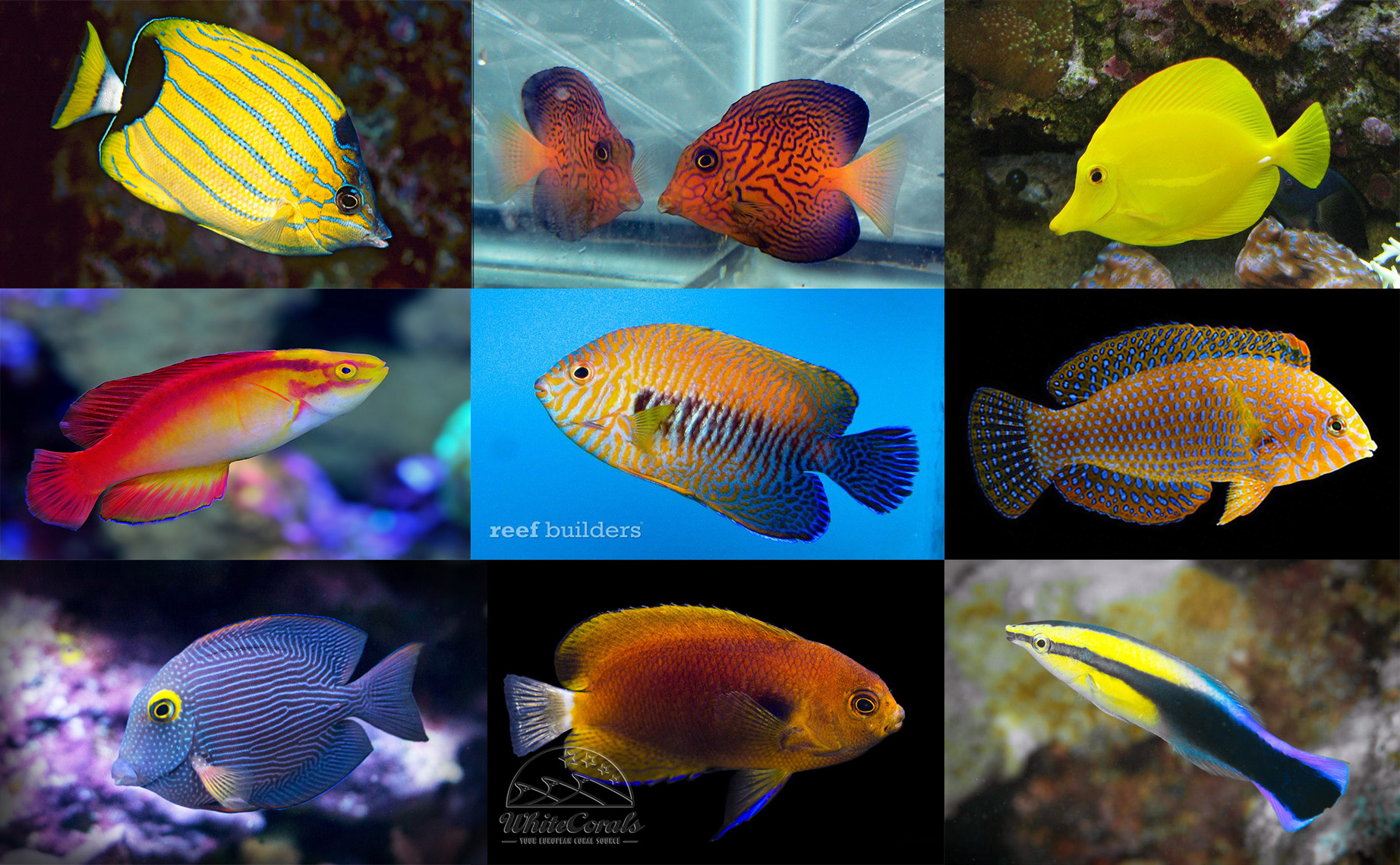There certainly has been a lot of commotion surrounding Hawaiian reef fish lately, following the total closure of commercial collection of aquarium fish from the Pacific island chain last week. It’s been a long, drawn out legal battle in the courts but with this latest ruling, the supply of affordable, sustainably collected fish from Hawaii is no more, and with it there’s a great number of fish which are about to become much harder to find in the aquarium hobby.
There are a lot of reef fish with scientific names that end with ‘hawaiiensis‘ but even if they aren’t strict endemics, the saltwater hobby was heavily reliant on Hawaiian fish collectors for a wide assortment of iconic aquarium fish. The suspension of Hawaiian fish collection is really unfortunate because we aren’t just losing access to certain species, but the Hawaiian aquarium live fishermen are some of the best fish collectors in the world – they know how to catch fish gently, they know how to handle them with care, and they know how to ship them properly to the mainland and around the world.
In this new climate where the saltwater aquarium hobby is fresh off of losing one of our oldest, most reliable and most unique sources of reef aquarium fish, we wanted to spotlight the top 10 fish we’ll be missing the most from Hawaii. There are many different species that are a staple from Hawaii but are also quite common elsewhere, especially various species of reef butterflyfish, Moorish Idols, Naso Tangs and so much more, but the following ten fish are really most common in the Aloha state and we’ll never take them for granted.
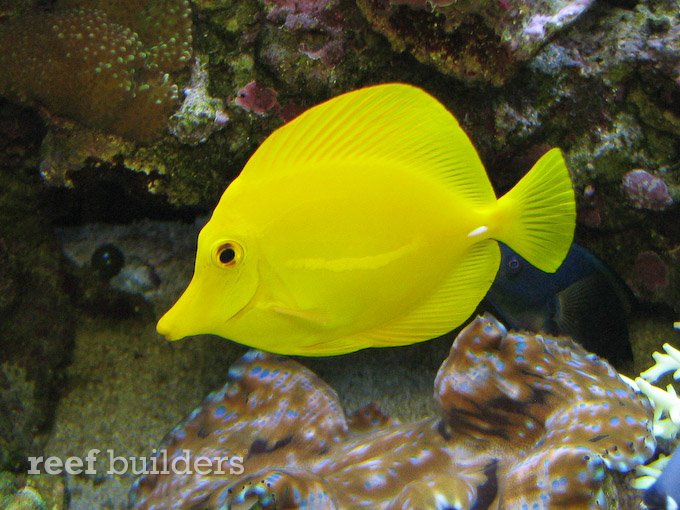
The yellow tang, Zebrasoma flavescens is probably one of the most classic, and recognizable saltwater aquarium fish in the world. Rivaled only by the common clownfish, even people who don’t know anything about aquariums can probably tell you that it’s a saltwater fish.
There are plenty of solidly yellow aquarium fish, both fresh and salt, but the saturated yellow body with symmetrical fins and a friendly face is a staple of popular aquarium culture. Couple its looks with a hardy nature and algae grazing habits makes the yellow tang a favorite of many new saltwater fish and reef tanks. The yellow tang has a wide range outside of Hawaii but they are most abundant and easy to find in this part of the Pacific Ocean.

The Kole Tang or yellow eyed bristletooth is another super common Hawaiian reef fish with the official name of Ctenochaetus strigosus. This small hardy surgeonfish may not be as vividly colorful as the well known yellow tang, but it has the same hardy nature and is a light grazer of aquarium algaes. The Kole tang can be found in some other parts of Oceania but it’s really most abundant on the reefs of Hawaii.
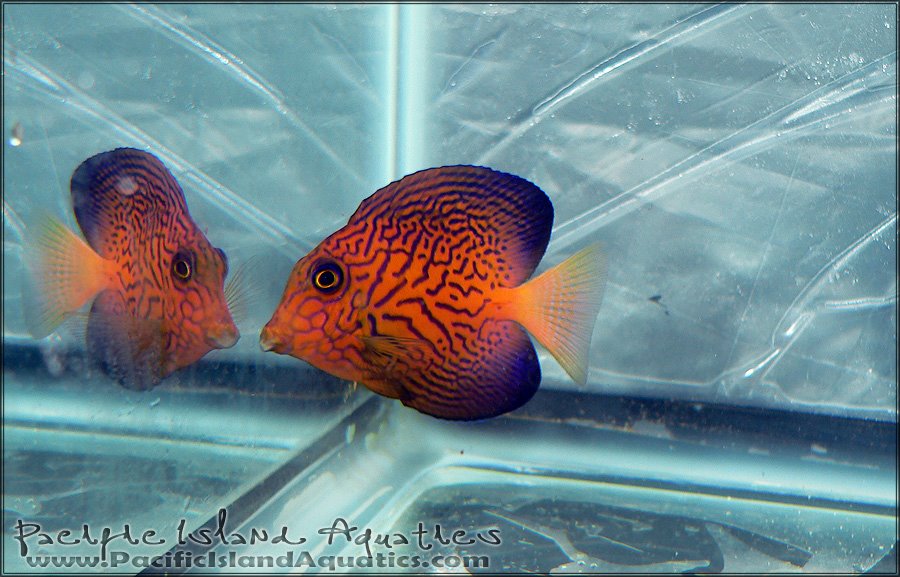
The Chevron Tang, Ctenochaetus hawaiiensis is a very interesting fish with Hawaii in its name but it has been collected as far as the Philippines. It makes for a great aquarium fish when it is small with brilliant orange body and tail framed by blueish fins and blueish reticulations across the body. Unfotunately, the common name for this fish in Hawaii is ‘black tang’ because it grows up to be a large, very dull aquarium fish that often becomes the bully of its aquarium.
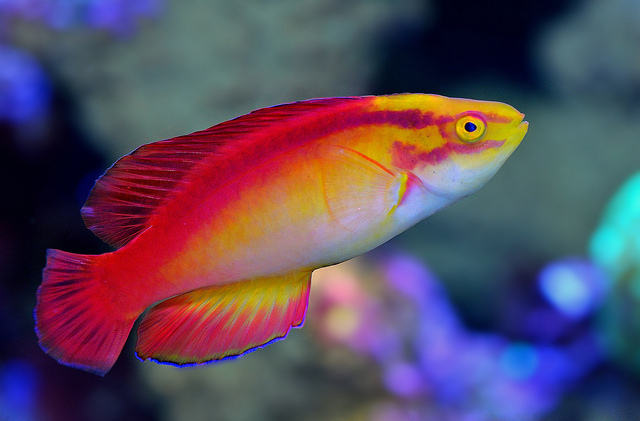
The Flame Wrasse, Cirrhilabrus jordani is a pure Hawaiian endemic where it can be quite abundant at the shallow parts of deeper reef habitats. This gorgeous labrid is probably one the most deserving of being called a ‘flame’ since males have a bright yellow body which is outlined by vivid red fins that are additionally edged in metallic blue. Two red stripes frame its bright yellow eyes and it has a very flashy nuptial display. This species was probably the most widespread of the ‘fancy’ or rare fairy wrasses in the aquarium hobby and despite many observations of captive spawning, we’ve yet to see any aquacultured specimens.
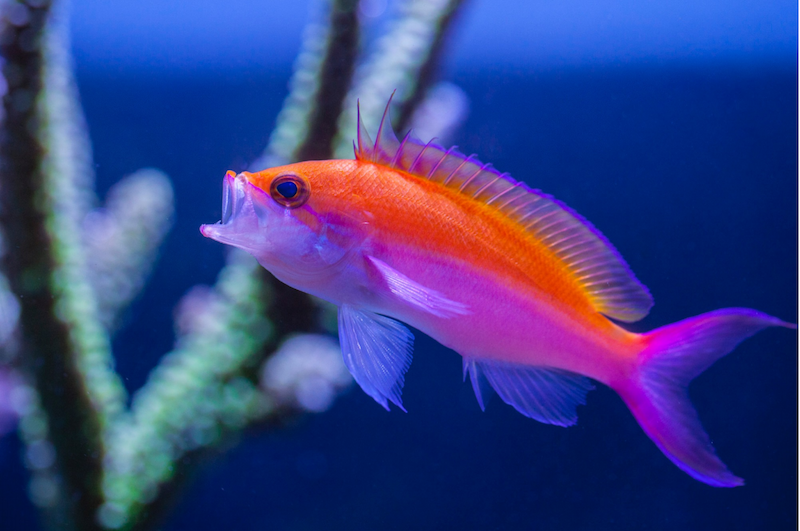
The Bicolor Anthias is not necessarily the most celebrated among the ‘fairy basslets’ but the bright pink and orange coloration of the body can be very striking in healthy, conditioned specimens. This species is wide ranging but is so abundant in Hawaii that it frequently rode along with boxes of yellow tangs and other Hawaiian collected fish.
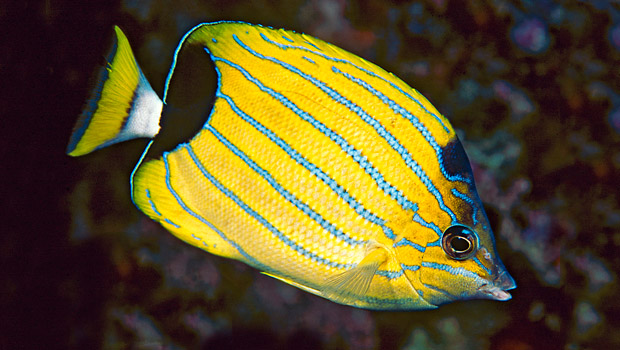
The Blue Stripe Butterflyfish, Chaetodon fremblii is a purely Hawaiian endemic and has a unique coloration among all butterflyfish. Where almost all Chaetodon are pretty much variations of black and yellow markings with varying degrees of white, the blue stripe butterflyfish is the only species with bright metallic blue lines across its body. Despite being hardy and colorful, this butterflyfish is not safe for reef aquariums and corals but makes a great pet in a dedicated saltwater fish aquarium.
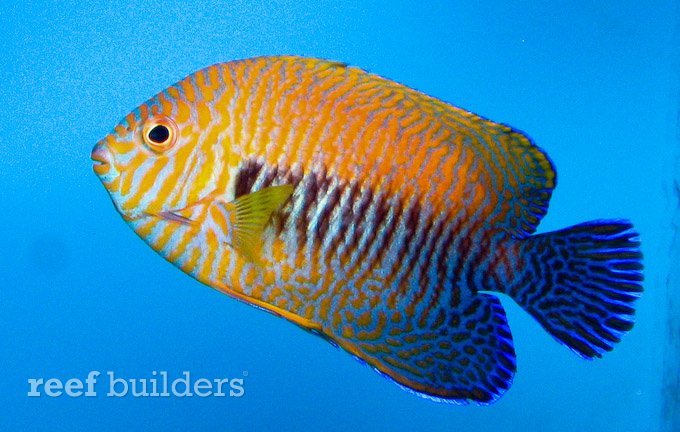
The Potter’s Angelfish, Centropyge potteri is perhaps the most underrated of all the classic Hawaiian reef species. This purely Hawaiian endemic is incredibly colorful with bright blue lines across the back half of the body, transitioning to bright yellow orange lines on the front of the body and face. If this fish had been less common it certainly would have been a much more celebrated pygmy angelfish and while it has been successfully captive bred in the past, we are a long way from any current aquaculture efforts to supply the aquarium hobby.
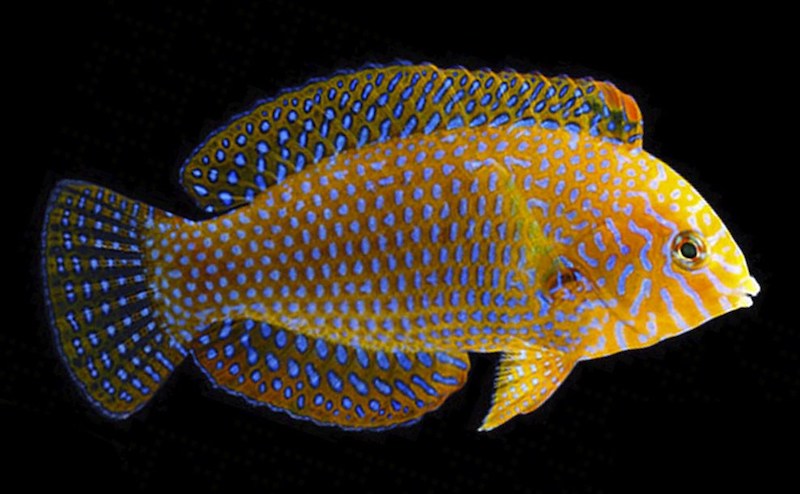
The Potters Wrasse, Macropharyngodon geoffroyi is a beautiful active reef fish with a beautiful orange body peppered with numerous small bright blue spots. Like other species of leopard wrasse the Potters has a small mouth for picking small invertebrates and are great at keeping giant clams free of rice snails.
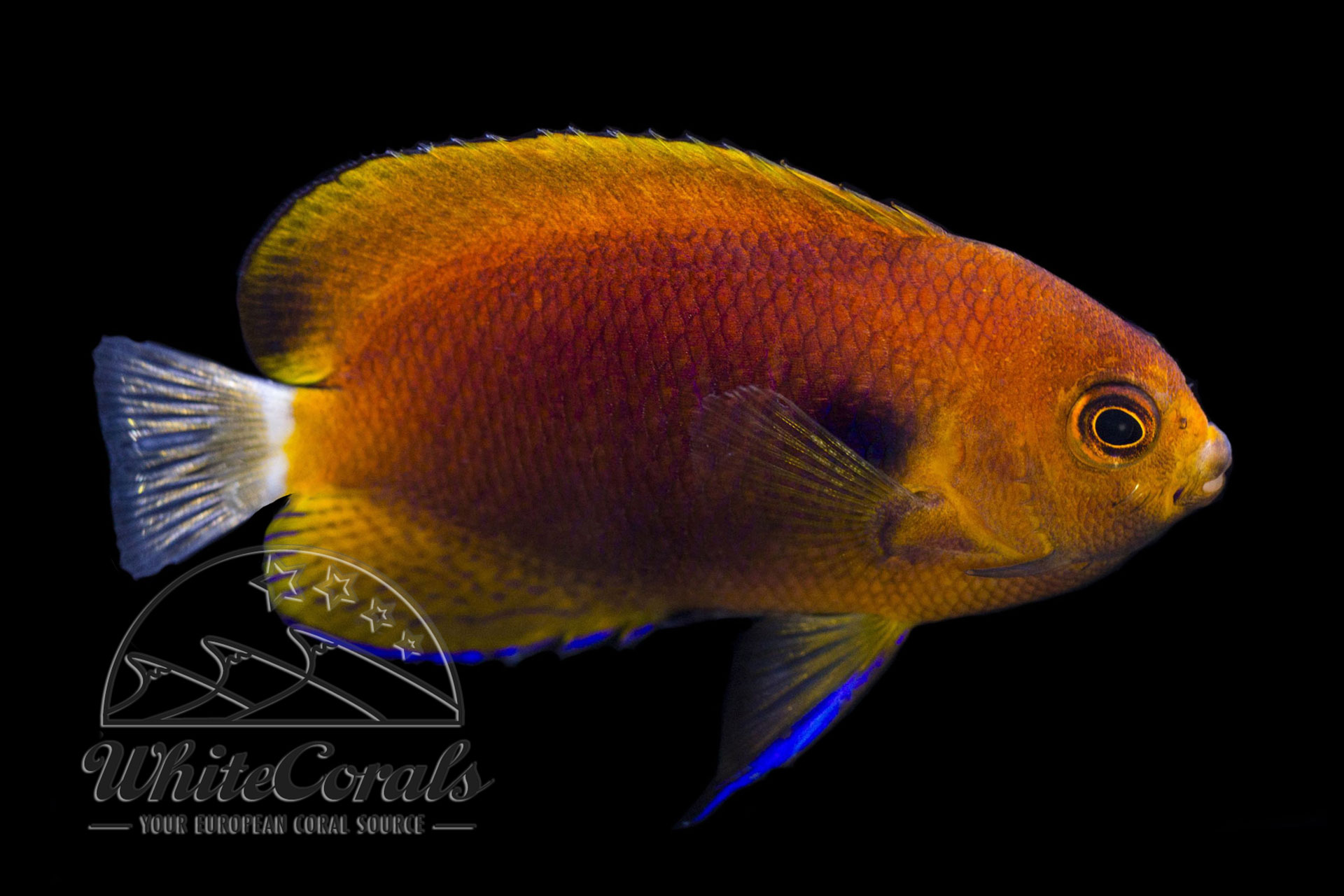
The Fisher’s Angelfish, Centropyge fisheri, is one of the smallest pygmy angelfish and really needs to be in prime condition to exhibit a subtle beauty. It is closely related to the Pacific whitetail angelfish, Centropyge flavicauda, which is mostly blue but the Fisher’s angelfish is mostly golden brown in coloration. Subtle blue markings remain on the edges of the anal and pelvic fins and a black pectoral spot accents the body of the fish and while it hasn’t been bred in captivity, it has been artificially hybridized with other species of small blue pygmy angelfish.
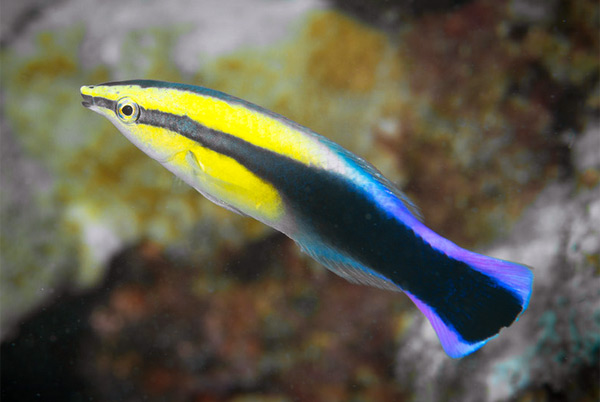
The Hawaiian Cleaner Wrasse, Labroides phthirophagus is a beautiful endemic species of cleaner wrasse with a rainbow of coloration. Whereas a common cleaner wrasse is lbue with a black stripe and a white face, the Hawaiian cleaner wrasse is yellow in the face and purple in the tail, making for a very flashy, active colorful reef fish. This species has been challenging for aquarists to acclimate to aquarium life and foods but recent efforts have succeeded in captive breeding this fish, offering hope that we might some day enjoy aquacultured specimens of the Hawaiian cleaner wrasse.


